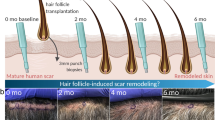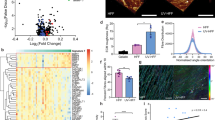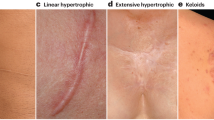Abstract
Fibrosis is a common side-effect of radiation therapy. As a complex network of cytokines and other mediators plays a central role in the process leading to fibrosis, we used an in vivo method to measure skin collagen synthesis, taking into account the physiological conditions. We determined suction blister (i.e. interstitial) fluid concentrations of types I and III procollagen propeptides, reflecting types I and III collagen synthesis, in irradiated and unirradiated skin of breast cancer patients 1-5 years after surgery and radiation therapy, hence using the patients as their own controls. The mean concentrations of the measured collagen markers were approximately two times higher in the irradiated skin than in the unirradiated contralateral breast skin. The difference slowly diminishes with time. These results indicate that abundant collagen synthesis in the irradiated skin continues several years after discontinuation of the radiation therapy, leading to fibrosis. The method outlined here offers a new in vivo perspective to study events leading to radiation fibrosis.
This is a preview of subscription content, access via your institution
Access options
Subscribe to this journal
Receive 24 print issues and online access
$259.00 per year
only $10.79 per issue
Buy this article
- Purchase on Springer Link
- Instant access to full article PDF
Prices may be subject to local taxes which are calculated during checkout
Similar content being viewed by others
Author information
Authors and Affiliations
Rights and permissions
About this article
Cite this article
Autio, P., Saarto, T., Tenhunen, M. et al. Demonstration of increased collagen synthesis in irradiated human skin in vivo. Br J Cancer 77, 2331–2335 (1998). https://doi.org/10.1038/bjc.1998.387
Issue Date:
DOI: https://doi.org/10.1038/bjc.1998.387
This article is cited by
-
Initial damage produced by a single 15-Gy x-ray irradiation to the rat calvaria skin
European Radiology Experimental (2020)
-
Effects of 900 MHz Radiofrequency Radiation on Skin Hydroxyproline Contents
Cell Biochemistry and Biophysics (2014)
-
The Serial Free Fat Transfer in Irradiated Prosthetic Breast Reconstructions
Aesthetic Plastic Surgery (2009)



